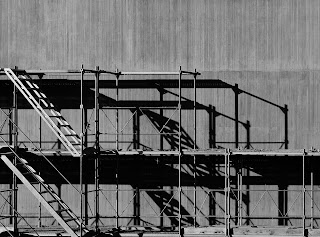The Indispensable Role of Scaffolding in Construction Works
In the realm of construction, safety and efficiency are paramount. One essential tool that plays a vital role in ensuring both is scaffolding. Scaffolding is a temporary structure erected around buildings or other structures during construction, maintenance, or repair works. Its versatility and adaptability make it an indispensable asset to the construction industry. This article will explore the various uses of scaffolding during construction works and highlight its importance in promoting safe and successful building projects.
Providing Safe Access and Support
One of the primary purposes of scaffolding is to provide safe access for workers to reach elevated areas of the construction site. Whether it's constructing tall buildings, bridges, or renovating historical structures, scaffolding acts as a secure platform that allows workers to move freely and efficiently across various levels. This reduces the risk of accidents, such as falls from heights, and ensures that tasks can be completed with precision and attention to detail.
Facilitating Material Transport
In addition to providing safe access for workers, scaffolding also facilitates the movement of construction materials and equipment. Instead of manually carrying heavy materials up and down ladders or staircases, workers can use the scaffolding to transport items efficiently. This not only reduces physical strain but also expedites the construction process, leading to cost and time savings.
Supporting Heavy Loads
Modernscaffolding systems are designed to support heavy loads, making it possible for workers to carry out tasks that involve bulky construction materials or machinery. This load-bearing capability is particularly useful when constructing high-rise buildings, as it allows workers to safely hoist and install materials at various levels without compromising structural integrity.
Ensuring Stability and Balance
A well-erected scaffolding system enhances the stability and balance of workers while they undertake construction tasks. Stability is crucial when dealing with delicate or intricate work, as it minimizes the chances of accidental damage and ensures quality craftsmanship. Moreover, scaffolding systems are engineered to withstand external factors such as wind and vibrations, further enhancing the safety and reliability of construction works.
Enhancing Safety Measures
Safety is paramount in any construction project, and scaffolding contributes significantly to the implementation of necessary safety measures. By providing a designated platform for work, scaffolding reduces the risk of workers standing on unstable surfaces or unsecured structures. It also serves as a fall arrest system, equipped with guardrails and safety nets, to prevent serious accidents from occurring.
Facilitating Inspection and Maintenance
Scaffolding is not only used during initial construction but also during maintenance and inspection activities. It allows workers to access all areas of a structure for regular inspections, repairs, or renovations. Regular maintenance ensures the longevity and durability of the building, saving costs in the long run and ensuring the safety of its occupants.
Scaffolding serves as a crucial tool in the construction industry, providing safe access, support, stability, and efficiency throughout the building process. Its versatility and adaptability make it an essential asset for construction works of all scales, from small-scale renovations to large-scale infrastructure projects. By ensuring the safety of workers and enhancing construction processes, scaffolding plays a pivotal role in delivering successful and high-quality construction projects. As technology continues to advance, the development of innovative scaffolding systems will further improve construction practices, making it an exciting area to watch for continuous improvements in the industry.




Komentarze
Prześlij komentarz